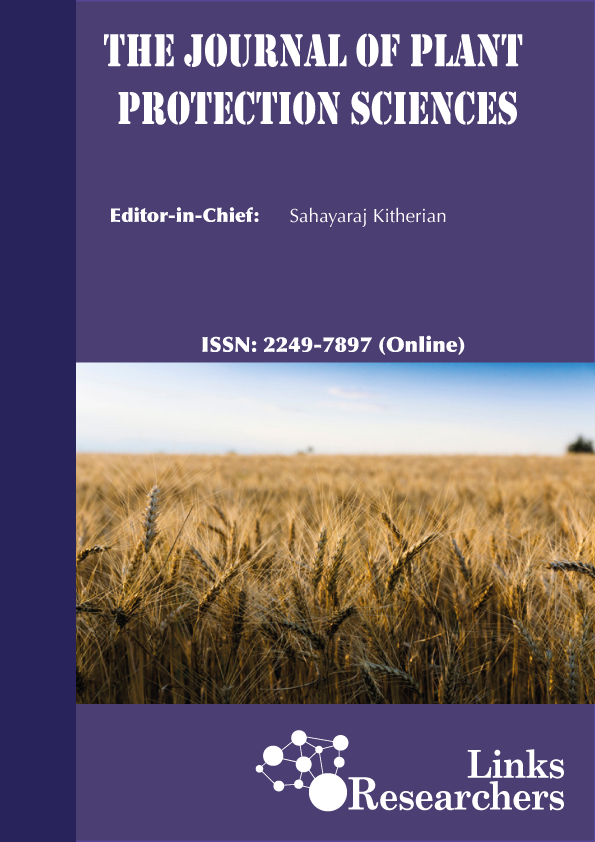Hayat Badshah1*, Farman Ullah1, Abid Farid2, Ahmad-U-Rahman Saljoqi1, Sajjad Ahmad3
SK Fashi Alam, Atanu Seni and Ajoy K Sahoo
Amitava Konar, S. Paul and Kiran A. More
Abhijit Ghosal and M. L. Chatterjee
Muhammad Shoaib Saleem*, Muhammad Faheem Akbar, Amjad Sultan and Saqib Ali
Muhammad Latif2, Muneer Abbas1*, Faisal Hafeez2 and Dilbar Hussain2
Muhammad Khalil Ahmad Khan1*, Muhammad Zafar2, Munazza Perveen3, Munir Ahmad3, Asia Iqbal4, Asmatullah3
respectively. In the laboratory, the vegetable plant leaves being applied by residual
film technique with tested Aphid population. The most toxic insecticide was found
to be malathion with LC50 as 20.11 μg cm-2 for A. craccivora and 25.28 μg cm-2 for
A. gossypii while carbosulfan was found to be least toxic with LC50 as 312.80 μg
cm-2 for A. craccivora and 322.25 μg...
Shah Nawaz Khuhro1*, Irshad Ali Junejo1, Muhammad Haroon Hullio1, Sultan Ahmed Maitlo2, Javeed Shabir Daar3 and Shahjahan Rajput1
Ghulam Murtaza1*, Muhammad Ramzan2, Amna Razzaq4, Muhammad Numan3, Rukhsar Beanish4, Ayesha Zafar4, Muhammad Shan Latif3 and Muhammad Adnan3
Zafar Abbas1*, Shahzada Munawar Mehdi2, Muhammad Nasir3, Muhammad Ashraf4, Salma Kausar5, Nadeem Iqbal6, Muhammad Zahid Khan Nazar7, Iftikhar Ahmad3, Ghulam Murtaza1 and Ijaz Ahmad8
Aly Khan1*, Shagufta Ambreen Sheikh2, Khalil Ahmed Khanzada1, Syed Shahid Shaukat3 and Javaid Akhtar1
H. Ravindra†, M. Sehgal*, A.S. Pawan, B.S. Archana, S.A. Shruti and H.B. Narasimhamurty
Ahmad-ur-Rahman Saljoqi, Sadar Iqbal and Imtiaz Khan*
Muhammad Hasnain1*, Muhammad Hussnain Babar1, Ghulam Sarwar1, Muhammad Kashif Nadeem2, Sajid Nadeem3, Muhammad Akram4, Ali Raza4, Mussurrat Hussain5, Qaisar Abbas5 and Muhammad Shahid4
Saboor Naeem and Amjad Usman*








